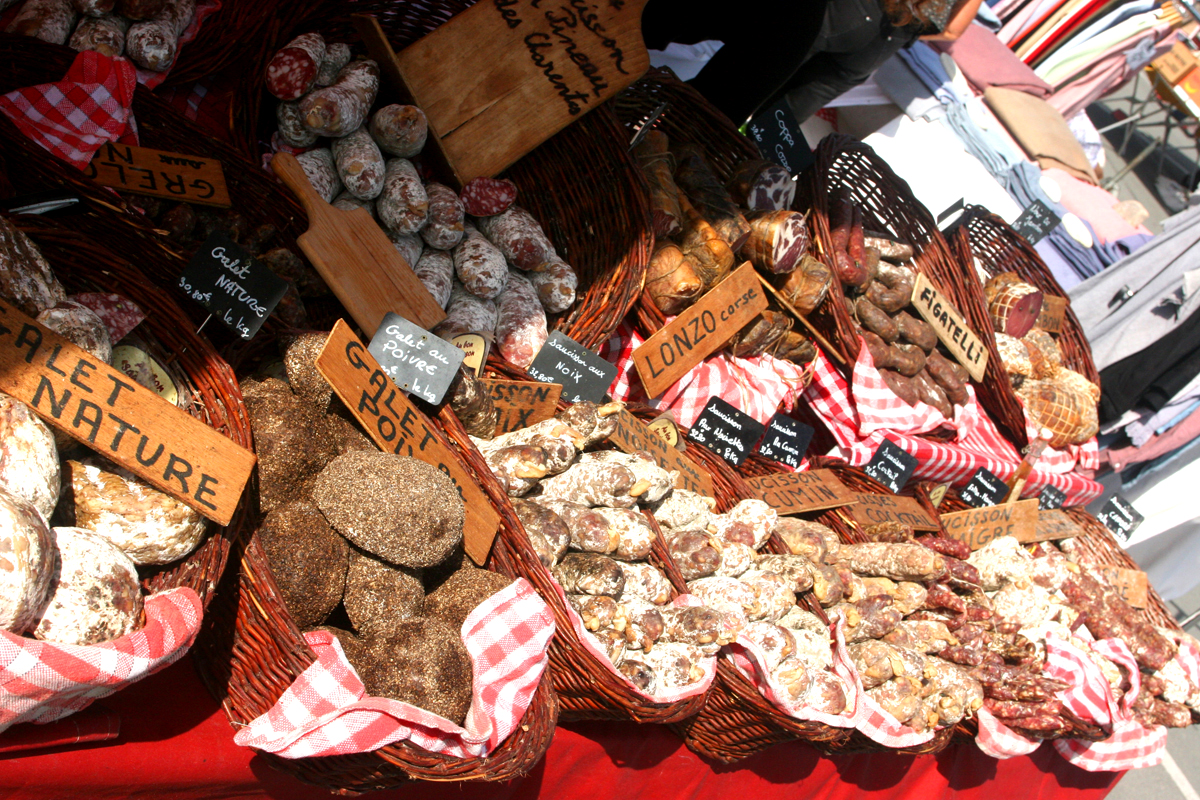Yesterday was the opening day of hunting season. All morning long the fields and woods around St. Clément echoed with the boom of shotguns blasting away at small birds. At breakfast, I asked Natacha what kind of birds the hunters were killing.
“Pigeons,” she said, pronouncing it pee-JHANS.
After breakfast I went to the salt museum, the Ecomusée du marais salant, in Loix. In order to avoid the hunters, I rode my bike through the Lizay forest, a protected bird sanctuary. It was cool and silent here, the pine trees muffling the faraway boom of birds being blasted out of the sky.
Once out of the forest, the paved trail took me past white stone houses with red tile roofs tucked behind waist-high walls of limestone. Every garden seemed to have fig trees, all busting with rich black fruit, and pear trees laden with fall-colored orbs.
I rode past fields of wild fennel, the licorice smell mingling with the brine from the ocean, and brambles of blackberries and currants, also wild. There were even wild grape vines climbing willy-nilly up the trunks of the forest pines, spilling thick clumps of bright green fruit across the branches.
Then down through Ars where schools of cyclists darted left and right, ringing their bicycle bells as they hurried towards the morning market where they wove through shoppers nibbling on samples of Emmental, saucisson alla fleur de sel, and brined olives. Atop mounds of ice were just-caught sardines, lobsters, sole, and, of course, oysters. Bushels and bushels of oysters, the delicate ones labeled fin and the fat, juicy fin de claires.
At least a dozen vendors were selling the island’s famed salt. It is either gray (called gros, from the clay of the salt pond) or pure white (fleur de sel) and comes in plastic bags mixed with herbs—basil, parsley, fennel, thyme—or in little crock pots with wooden spoons attached.
People on the island have been farming the salt since the Middle Ages. And then, about 20 years ago, the industry died out. The salt farmers couldn’t compete with the commercial producers. But in order to process salt on a large scale, chemicals are needed to make the salt edible. And the salt ends up bland or with an unnatural taste. So 10 or 15 years ago, people on the island started working the salt ponds again. They found that there were people who would buy their salt because it was naturally produced, without chemicals, and they liked its taste. Now there are almost 100 salt workers on the island, most of them young people.
I’m wondering if Natacha has any friends who work in the salt ponds.


Recent Comments